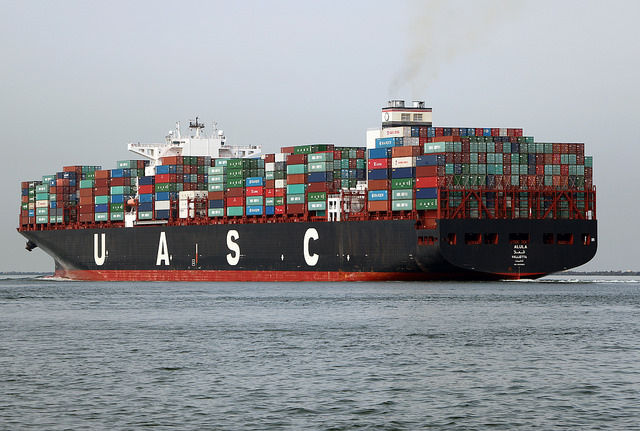The Different Parts that Make Up a Shipping Container
Shipping containers all over the world all look fairly similar. The truth is that their construction is fairly basic. That does not mean that they are all made up to the same standard, even though the parts used are the same.
You may think that a shipping container is just a big metal box, but their construction is a bit more sophisticated than you may think. For the weights that these metal boxes can carry, they have to be very strongly built because if they are not, then the structure could collapse under the weight. The design over the last 50 years or so has not changed very much, although the materials used may have improved somewhat. The institution of regularized container sizes has revolutionized business and commerce world wide.
The Basic Shape of a Shipping Container
Although shipping containers come in a variety of different shapes and sizes, the majority of them look like rectangular boxes. You will often find that the bottom of the shipping container has more reinforcing, so as to be able to carry the weights that they are going to carry.
A general purpose shipping container, whether it is 20 foot or 40 foot, will start with the construction of the shell of the floor. Two bottom side rails are placed parallel to each other, and then the bottom end rails are added to each end.
On the corners, a bracket called a Corner Fitting is added, and this adds strength as well as gives a place that you can put the corner posts later on. When this has been done, you are left with the basic rectangular shape of the floor of the shipping container. Then you need to add cross members that give rigidity and strength to the floor. These will be placed along the entire length of the shipping container and are spaced an equal distance apart from each other.
As it is also necessary for shipping containers to be moved by a forklift truck on occasion, two forklift pocket straps are added to the floor in equal distance from the centre. These are added so that the shipping container can balance easily on the forks of a forklift truck.
The roof of the shipping container is constructed in the same manner, although it does not have the cross members that you find on the floor. The reason for this is that the roof will not have to support as much weight as the floor will. When the floor and the roof have been constructed, then the four corner posts are added leaving you with a 3-dimensional rectangle.
A quality company like Port Container Services will make sure that all the joints and seams, where there is welding, will be done properly and to a very high standard.
Adding the Floors, Walls, and the Roof of the Shipping Container
Now that the basic frame of the shipping container is together, it is now time to finish off the assembly. The front end frame is added to one end of the construction, and this is made from corrugated steel. Just as with cardboard, the corrugation adds strength and rigidity – that is why it is used.
To the other end of the shipping container, the rear end frame is added, and then the door assembly is then also added, this will be the access point to the shipping container. The sidewall panels are then added, and these are also made from corrugated steel. On each sidewall panel, there are two flat pieces of steel where there is no corrugation. The reason for this is that it is designed to place markings and placards, so there are four of these in total on each shipping container.
There will also be a vent on each of the side panels that can be opened and closed, and is fully weatherproof, which means the cargo will be protected from the elements. The roof of the shipping container is made from one piece of corrugated steel.
You may also find that sometimes the roof of the shipping container is constructed from flat steel, rather than corrugated steel. The reason for this is that there is no need for the roof to be as strong as the walls or floor. With the floor, they usually add laminated wooden planks, or other composite materials such as fibreglass, which makes up the load bearing structure of the floor.
Adding the Finishing Touches
Inside the shipping container, the walls will also be lined with plywood or a similar material. A lining shield will be added, and this is a thin strip of metal which is added to the bottom of the interior walls. This lining strip protects the interior lining from being damaged by handling equipment during the loading and unloading of the shipping container.
At strategic points along the inside of the shipping container, they add bullrings, which are points that can be used to tie down any cargo to prevent it from moving during transit. There are other items that are added such as threshold plate, kick plate and so on, but this gives you an idea of the basic construction of these very common corrugated steel boxes. The entire of surface of the shipping container will also be covered in an anti-corrosion paint, which will help to protect the steel.
A well-constructed shipping container can last a very long time, especially if it is well maintained. As with anything else in this life, it is always best to pay a little bit more for high-quality so that it will last for a longer period.



